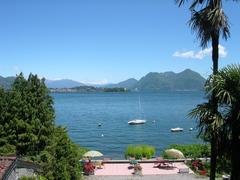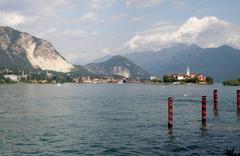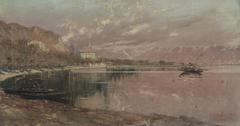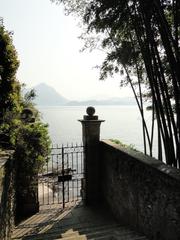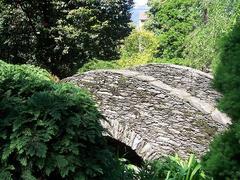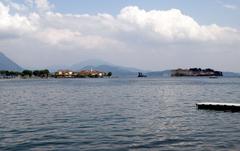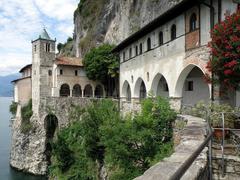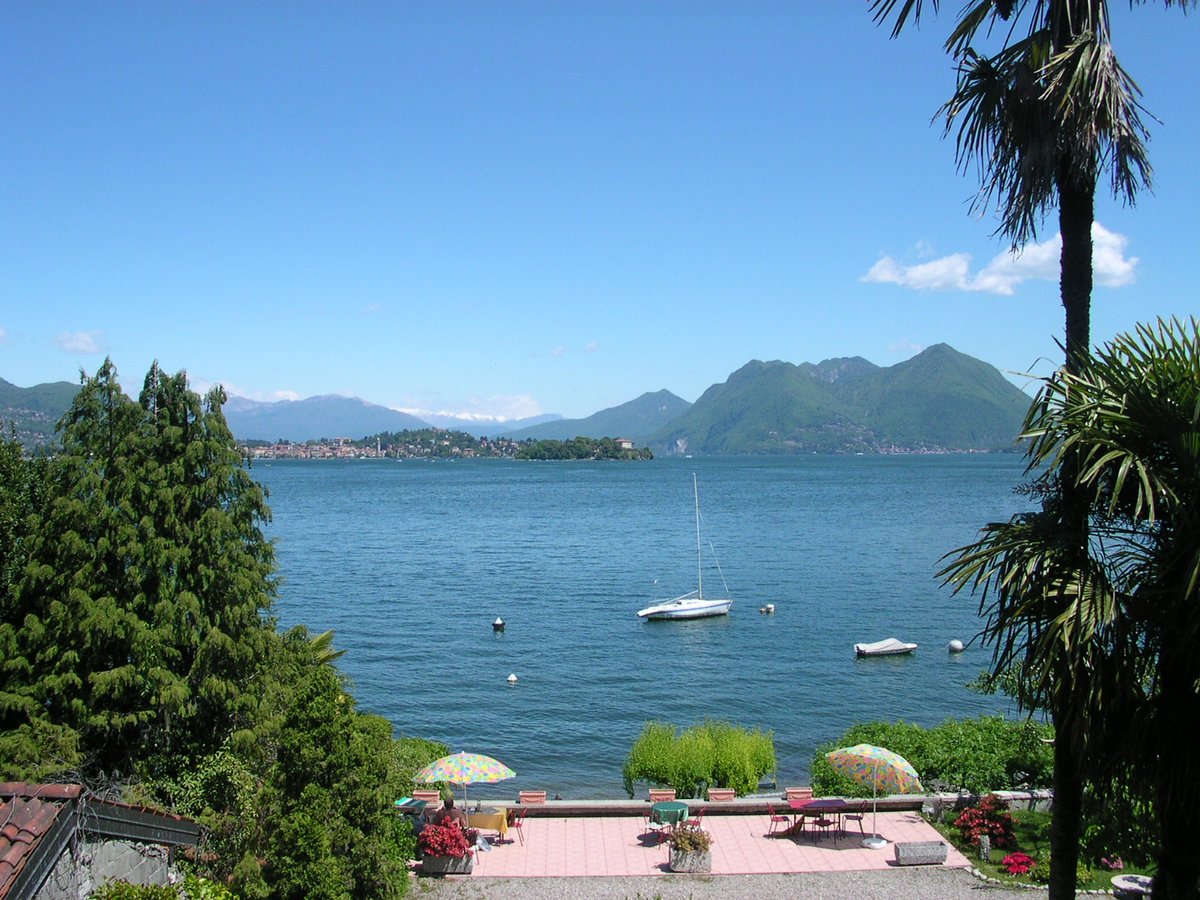
Comprehensive Guide to Visiting Via Giuseppe Verdi, Stresa, Italy
Date: 01/08/2024
Introduction
Nestled on the picturesque western shore of Lake Maggiore, the town of Stresa in Italy boasts a rich cultural and historical heritage that attracts visitors from around the globe. Among its many treasures, Via Giuseppe Verdi stands out as an iconic street, named after the renowned Italian composer Giuseppe Verdi. This street not only reflects the town’s deep historical roots but also its enduring connection to the arts and music. Walking along Via Giuseppe Verdi, one is transported through time, witnessing the legacy of influential families like the Visconti and Borromeo, who played pivotal roles in shaping Stresa’s development from a humble fishing village to a prestigious holiday destination (Italy Heritage). This comprehensive guide aims to provide you with all the information you need to explore Via Giuseppe Verdi, including its historical significance, visitor information, travel tips, and nearby attractions, ensuring you have a memorable and enriching experience in Stresa.
Table of Contents
- Introduction
- Historical Background of Via Giuseppe Verdi, Stresa, Italy
- Via Giuseppe Verdi: A Historical Landmark
- Visitor Information
- Conclusion
- FAQs
Historical Background of Via Giuseppe Verdi, Stresa, Italy
Early Beginnings and Medieval Era
Stresa, a picturesque town on the western shore of Lake Maggiore, has a rich history that dates back to before the year 1000. Originally known as Strixia, meaning “strip of land,” Stresa was primarily a fishing borough until the 15th century. The town’s strategic location and mild climate made it an attractive spot for the Visconti family, who established their holiday residence here. Later, the Borromeo family, one of Italy’s most influential noble families, also chose Stresa as their retreat, further enhancing its prestige (Italy Heritage).
Renaissance to the 19th Century
The transformation of Stresa from a humble fishing village to a renowned holiday destination began in earnest during the Renaissance. The Borromeo family played a pivotal role in this transformation, particularly with their development of the Borromean Islands, including Isola Bella and Isola Madre. These islands became famous for their stunning gardens and palaces, attracting visitors from across Europe (Italy Heritage).
In the 17th century, the Borromeo family initiated significant changes in Stresa, including the unification of the village, which had been divided by the River Crée. This river, now covered over, runs beneath Via Roma, a major thoroughfare in Stresa. The division of the village was marked by the rule of the Borromeo family on one side and the Visconti family on the other. This historical division is still commemorated today with an annual friendly football match between the Borromean and Visconti teams (Visit Stresa).
The Grand Tour and Literary Fame
From the 17th century onwards, Stresa became a popular stop on the “Grand Tour,” a traditional trip around Europe undertaken by young aristocrats to complete their education. The town’s inclusion in this prestigious itinerary was due to its beautiful location and mild climate. Notable visitors included Lord Byron, Charles Dickens, and Stendhal. Stresa also served as the backdrop for some chapters of Ernest Hemingway’s novel “A Farewell to Arms,” further cementing its place in literary history (Italy Heritage).
19th Century Developments
The 19th century saw significant developments in Stresa, particularly with the opening of the Simplon Pass in 1806. This new route made it easier for tourists and merchants to reach Stresa, increasing traffic between Switzerland and Italy. The first steam ferry, “Verbano,” began operating in 1826, further enhancing connectivity. However, it wasn’t until 1860 that Stresa had its first landing stage, allowing ferries to dock directly in the town (Visit Stresa).
An illustrious resident during this period was the Duchess of Genoa, who purchased the Villa Bolongaro (now Villa Ducale). Along with her daughter, Margherita, who later became the first Queen of Italy, the Duchess helped put Stresa on the map for the rich and famous. The Villa Ducale is now home to the International Centre for Rosminian Studies and houses a vast library (Visit Stresa).
The Arrival of the Railway and the Early 20th Century
The arrival of the railway in 1906 marked a turning point for Stresa, making it more accessible and boosting its popularity as a tourist destination. The Simplon rail tunnel, which opened in the same year, connected Stresa to major European cities, including a stop on the Venice-Simplon Orient-Express service. This period also saw the construction of several grand hotels, including the Hotel Regina Palace and the Grand Hotel des Îles Borromées, which hosted numerous celebrities and dignitaries (Italy This Way).
The early 20th century also witnessed the development of the Mottarone ski area, which became a significant attraction for tourists. In 1910, work began to cover over the River Crée and create Via Roma, paving the way for the Stresa to Mottarone railway. This electric rack and pinion railway, which opened in 1911, was a marvel of its time, carrying thousands of passengers annually until its closure in 1963 (Visit Stresa).
Post-World War II and Modern Era
After World War II, Stresa needed to re-establish itself as a premier tourist destination. In 1946, the first Miss Italia contest was held at the Hotel Regina Palace, generating significant media interest. This tradition of beauty contests was renewed in 2002 when Stresa hosted the Miss Universe Italian final (Visit Stresa).
Today, Stresa continues to attract visitors with its blend of historical charm and modern amenities. The town hosts numerous cultural events, including the Stresa Festival, which features renowned musical performances. The Palazzo dei Congressi serves as the venue for many of these events, further enhancing Stresa’s reputation as a cultural hub (Italy Heritage).
Via Giuseppe Verdi: A Historical Landmark
Via Giuseppe Verdi, named after the famous Italian composer, is one of the key streets in Stresa. This street, like many others in the town, is steeped in history and lined with beautiful villas and gardens. Walking along Via Giuseppe Verdi, visitors can appreciate the architectural splendor of Stresa’s past, including liberty-style palaces and well-maintained parks. The street is a testament to the town’s rich cultural heritage and its enduring appeal as a tourist destination (Italy Heritage).
Visitor Information
- Visiting Hours: Via Giuseppe Verdi is a public street and can be visited at any time. However, the best time to explore is during daylight hours to fully appreciate the architecture and gardens.
- Tickets: No tickets are required to visit Via Giuseppe Verdi. However, entry fees may apply for specific villas or gardens along the street.
- Travel Tips: Wear comfortable walking shoes as the street and surrounding areas are best explored on foot. Consider visiting during the spring or summer months when the gardens are in full bloom.
- Nearby Attractions: While in Stresa, don’t miss the Borromean Islands, the Mottarone ski area, and the grand hotels. The Stresa Festival and other cultural events are also highlights.
- Accessibility: Via Giuseppe Verdi is accessible to pedestrians, but some areas may have uneven surfaces. Visitors with mobility issues should plan accordingly.
Conclusion
Via Giuseppe Verdi is more than just a street; it is a journey through Stresa’s rich history and cultural legacy. Whether you’re a history buff, a literary enthusiast, or simply a traveler looking for a picturesque destination, Via Giuseppe Verdi and Stresa offer a wealth of experiences. Plan your visit today and immerse yourself in the charm and elegance of this beautiful Italian town.
FAQs
Q: What are the visiting hours for Via Giuseppe Verdi? A: Via Giuseppe Verdi is accessible to the public at any time, but daylight hours are recommended for the best experience.
Q: Do I need tickets to visit Via Giuseppe Verdi? A: No tickets are needed to visit the street itself, but individual attractions along the street may have their own entry fees.
Q: What are some nearby attractions? A: Nearby attractions include the Borromean Islands, Mottarone ski area, and the grand hotels of Stresa.
Q: Is Via Giuseppe Verdi accessible for people with mobility issues? A: The street is accessible to pedestrians but may have some uneven surfaces. Visitors with mobility issues should plan accordingly.
References
- Italy Heritage. (n.d.). Stresa, Verbania, Piemonte. Italy Heritage
- Visit Stresa. (n.d.). About Stresa. Visit Stresa
- Italy This Way. (n.d.). Stresa. Italy This Way
